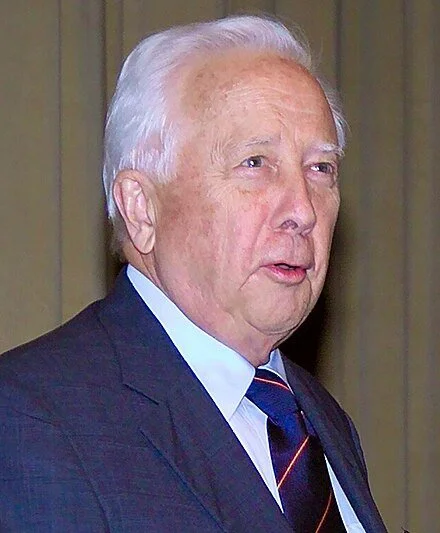
Not to be seen
David McCullough (1933-2022)
“Climb the mountain not to plant your flag, but to embrace the challenge, enjoy the air and behold the view. Climb it so you can see the world, not so the world can see you.”
xxx
“And read… read all the time… read as a matter of principle, as a matter of self-respect. Read as a nourishing staple of life.”
xxx
“There’s the New Millennium technology craze . . . holy moly, is there ever . . . the breathless infatuation with hi-def, 3D, 5G, glued to the hand, glued to the ear, twenty-first-century cyber gee-whizzery. They’re coming at us so fast—the gizmos, the doodads, the gimcracks, the wonderments—so ubiquitously, so overwhelmingly, we’ve not yet found how best to wrangle each new miracle into genuine usefulness.”
— David McCullough, immensely popular American historian. Over the years, he had residences in Boston’s Back neighborhood, Martha’s Vineyard, Camden, Maine, and Hingham, Mass., where he died.
The Old Ship Church, in Hingham. Built in 1681, it’s the only surviving 17th Century New England Puritan church.
Dissatisfied religionists
— Photo by Tim Valentine
The Old Ship Church (also called the Old Ship Meetinghouse) is a Puritan church built in 1681 in Hingham, Mass. It is the only surviving 17th-Century Puritan meetinghouse in America. Its congregation, gathered in 1635 and officially the First Parish in Hingham, occupies the oldest church building in continuous religious use in the United States.
The New York Times called it "the oldest continuously worshiped-in church in North America and the only surviving example in this country of the English Gothic style of the 17th Century. The more familiar delicately spired white Colonial churches of New England would not be built for more than half a century."
Within the church, the ceiling, made of great oak beams, looks like the inverted frame of a ship — thus the church’s name.
From the Unitarian-Universalist World:
“The people who colonized Hingham were eager to get as far away from the influence of the Puritans in the Massachusetts Bay Colony as they could, so they settled in Hingham, twenty miles south of Boston. Ebenezer Gay, who served as the congregation's pastor from 1718 to 1787, rejected Calvinism in favor of Arminianism, the precursor of American Unitarianism. By the end of the eighteenth century, the congregation was essentially Unitarian, according to the Rev. Ken Read–Brown, the church's minister for the last twenty years.’’
New England has a great many houses of worship, at least in part because it was settled by people who were unhappy with the Church of England, or with Rome, or with Martin Luther; or who simply had a scheme of their own they wanted to try out — usually having to do with wearing black clothes and making sure everyone behaved.
From Contemporary New England Stories (1992), by C. Michael Curtis
Thanksgiving through the years
The Old Ship Church (1681), in Hingham, Mass., the only surviving 17th-Century Puritan meeting house in the U.S., and the oldest church building in continuous ecclesiastical use in the nation
Adapted from Robert Whitcomb’s “Digital Diary,’ in GoLocal24.com
Different species of Thanksgivings. In my past, first there were the long, far-too-complicated and heavy feasts of my childhood, with my four siblings, parents, two or three grandparents, and sometimes a few other relatives from outside our nuclear family, in our house on a hill. It seemed to always be gray and windy that day, with the brown oak leaves swirling. A dull headache after the interminable meal.
Then, after the grandparent generation disappeared, the gatherings shrank, and we often ate in restaurants and sometimes included single friends who may or may not have been lonely. Mediocre food but a crisp couple of hours and it was over.
Much later came our kids and the gatherings grew again for a few years.
Now it’s back to small and quiet as kids and others disperse or disappear. But with holidays, as with so many other things, less can be more. I remember with particular fondness the very quiet and mellow Thanksgiving my wife and I had in the dining room of a hotel in 1975 followed by a nice walk in the old streets around Rittenhouse Square, in Philadelphia.
Rittenhouse Square, Philadelphia.
The lyrics and haunting melody of “We Gather Together,’’ the Thanksgiving hymn, although they can be traced back to the late 16th Century as a Dutch Protestant song, have always evoked to me New England’s Puritan origins. “Shining City on a Hill’’ and all that. Two cheers for Calvinism.
1. We gather together to ask the Lord’s blessing;
He chastens and hastens His will to make known;
The wicked oppressing now cease from distressing;
Sing praises to His Name; He forgets not His own.
2. Beside us to guide us, our God with us joining,
Ordaining, maintaining His kingdom divine;
So from the beginning the fight we were winning;
Thou, Lord, were at our side, all glory be Thine!
3. We all do extol Thee, Thou Leader triumphant,
And pray that Thou still our Defender will be;
Let Thy congregation escape tribulation;
Thy Name be ever praised! O Lord, make us free!





